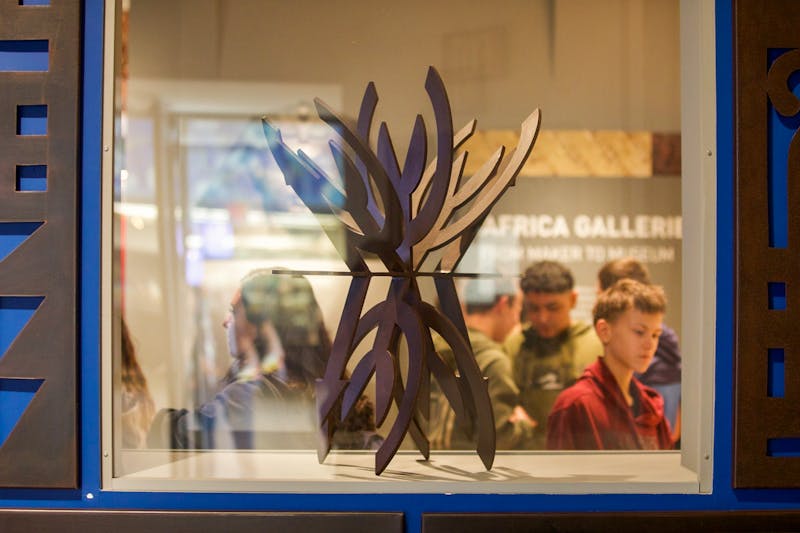Department officials say they're moving toward Title IX regulation equity. The University's male sports teams receive more than twice as much funding as its female teams, and nearly two-thirds of Penn's athletes are men, according to a recent Athletic Department report to the federal government. But Athletic Department officials insist they continue to make progress toward meeting federal Title IX requirements of equal funding for men's and women's sports. The requirements were imposed as part of the Educational Amendments to the Civil Rights Act of 1964. "We're doing a very good job proportionally," said Associate Athletic Director Carolyn Schlie Femovich, who compiled the report. "Our primary goal is to improve women's programs without taking away from any of the men's programs, and I think we are reaching that goal effectively." The University released the information last week as part of its Equity in Athletics Disclosure Act Report for the 1996-97 academic year. This is the second year Penn compiled the report, which analyzes participation in and funding for the school's intercollegiate athletic programs. The report -- mandated by a 1995 law requiring universities to publicize information about their athletic programs -- is filed with the federal government and the National Collegiate Athletics Association. The EADA report provides detailed information on each of the University's 16 men's varsity teams and 14 women's varsity teams, including data on recruiting and coaches' salaries. In 1996-97, total operating expenses for men's teams were $925,717 -- 68 percent of the total varsity sport expenditures -- while only $433,898 was spent on the women's teams, the report found. But officials stressed that the department's per capita expenditures of $1,641 for participants in men's sports and $1,496 for participants on women's teams indicates that athletic funding is becoming increasingly equitable. Calculation of per capita expenditure was one of several changes to this year's EADA report, which was designed to better define many of its statistics. Other changes included counting varsity and "subvarsity" athletes separately to be more reflective of sports participation. Subvarsity athletes are defined as those who participated in practices but did not compete or travel with the team. The report also found that male participants account for 62.6 percent of the University's total number of varsity athletes, with women comprising the remaining 37.4 percent. Additionally, more than 80 percent of the subvarsity athletes are male. Penn's undergraduate student body, however, is only 51.5 percent male. "We will close the gap, but I don't think we'll reach the 52-48 percent split," Femovich said. "But that's okay -- as long as we are addressing women's needs. "One way we're doing that is by increased attention to recruiting for the women's teams," she added. But although total recruiting expenditure for women's teams increased 70 percent from 1995-96 to 1996-97, nearly three-quarters of the total recruiting budget continues to be spent on men's sports, according to the report. Such percentage increases, however, reflect the report's new definitions for recruiting expenses, which includes several expenditures -- such as long distance telephone calls, postage and brochures sent to high school students -- which were not included in last year's calculations. In addition to the increased recruiting efforts, Femovich said the department is working to increase the number of full-time coaches for both men's and women's teams. "We need full-time coaches to focus on the growth of their programs, and help the students throughout their time here at Penn," Femovich said. "They provide a strong system of support for the athletes." There are currently 13 full-time coaches for the 16 men's teams, and 12 for the 14 women's teams. Discrepancies between the number of assistant coaches are much larger, however. There are currently 42 full- and part-time assistant coaches for the men's teams, but only 22 for the women's teams. Most of this difference can be accounted for by the 16 assistant coaches in the men's football program. Because the University is not currently offering equitable opportunities for its male and female student-athletes, Title IX requires the Athletic Department to prove that it is at least making consistent efforts to address student concerns about the discrepancies. In February, the University will conduct a "needs and interest" survey of female students to determine what changes students think are needed to Penn's varsity, intramural and club athletic programs.
The Daily Pennsylvanian is an independent, student-run newspaper. Please consider making a donation to support the coverage that shapes the University. Your generosity ensures a future of strong journalism at Penn.
DonatePlease note All comments are eligible for publication in The Daily Pennsylvanian.







